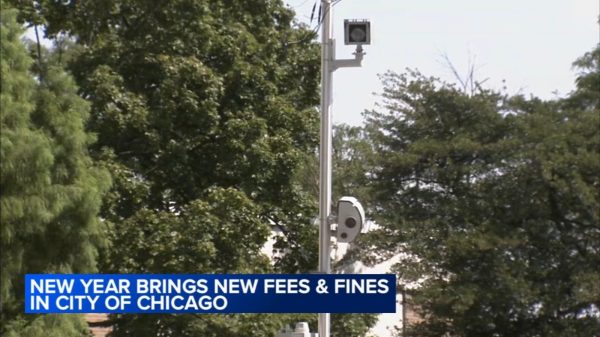
The Toyota RAV4 is one of the most popular compact SUVs, celebrated for its reliability, versatility, and strong resale value. However, like all vehicles, the RAV4 is not without its issues. Over the years, certain versions have been more prone to specific faults. Here, we’ll go over common Toyota RAV4 problems, when they occur, and what you can do to mitigate them. For potential buyers, we’ll also provide tips on how to find a good used model.
Excessive Oil Consumption (2006-2008 Models)
Owners of 2006 to 2008 Toyota RAV4s often report excessive oil consumption. This issue tends to arise between 75,000 and 150,000 miles. Drivers notice that their engines burn through oil at an accelerated rate, leading to frequent top-ups between oil changes.
This issue is typically caused by worn piston rings, which allow oil to seep into the combustion chamber. Left unaddressed, it can cause long-term engine damage. Toyota acknowledged this issue and offered repair assistance for affected owners within a specific timeframe.
To manage this problem, monitor your oil levels regularly and schedule maintenance promptly. If you’re purchasing one of these model years, ask the previous owner about oil consumption and any related repairs.
Unintended Acceleration (2009-2012 Models)
From 2009 to 2012, RAV4 owners reported cases of unintended acceleration. This alarming issue stems from electronic throttle control systems and, in some cases, pedal entrapment by floor mats.
The problem can occur at varying mileages, though most incidents happen after 40,000 miles. Toyota issued recalls to resolve these issues, offering software updates and redesigned floor mats to affected vehicles.
When buying a used RAV4 from these years, verify that the recall work has been completed. You can check this by entering the Vehicle Identification Number (VIN) into Toyota’s recall lookup tool.
Transmission Issues (2001-2003 and 2019 Models)
Transmission problems have plagued both early and recent RAV4 models. The 2001-2003 RAV4s are notorious for having transmission issues due to a faulty Engine Control Module (ECM). Symptoms include harsh shifting, hesitation, and even complete transmission failure, often occurring after 100,000 miles.
Similarly, 2019 RAV4 models have experienced rough shifting and delayed engagement. These issues typically arise around 30,000 to 50,000 miles. Owners have reported feeling jerky motions during acceleration or deceleration, which significantly impacts the driving experience.
To avoid costly repairs, ensure the ECM in older models has been replaced or reprogrammed. For 2019 models, check for software updates or warranty claims.
Engine Misfires (2001-2003 Models)
Early second-generation RAV4 models (2001-2003) are prone to engine misfires caused by faulty ECMs. These misfires often occur after 100,000 miles and can trigger the check engine light.
The solution typically involves reprogramming or replacing the ECM and, in some cases, repairing engine damage caused by prolonged misfires. Always inquire about the ECM status when evaluating these older models.
Steering Issues (2006-2010 Models)
Many RAV4 owners from 2006-2010 have experienced steering issues, such as a clunking noise when turning the wheel or difficulty steering. This problem often stems from a faulty intermediate steering shaft and usually occurs after 70,000 miles.
Toyota addressed this issue by offering repair options under warranty for certain owners. If you’re considering these model years, have a mechanic inspect the steering components during a pre-purchase inspection.
Water Pump Failures Were a Common Toyota RAV4 Problem (2006-2012 Models)
Water pump failure is a common issue in 2006-2012 RAV4 models. Symptoms include engine overheating, coolant leaks, or a whining noise from the engine bay. This problem often arises after 80,000 miles.
Replacing the water pump is a straightforward repair, but neglecting it can lead to severe engine damage. When inspecting a used RAV4, check for signs of coolant leaks and inquire about water pump replacement history.
Infotainment System Glitches (2013-2018 Models)
Fourth-generation RAV4s (2013-2018) are known for infotainment system issues. Common complaints include unresponsive touchscreens, frequent system reboots, and Bluetooth connectivity problems. These issues often surface after 40,000 miles.
Toyota has released software updates for some of these glitches, but they may not resolve all issues. If you’re buying a used RAV4 from this era, test the infotainment system thoroughly to ensure it works as expected.
Fuel Pump Failures (2019-2020 Models)
Fuel pump failure is a critical issue affecting 2019 and 2020 RAV4s. A defective fuel pump can cause stalling, rough idling, or difficulty starting. These failures usually occur between 20,000 and 40,000 miles.
Toyota issued a recall for this issue, so it’s vital to verify that the repair has been completed. A malfunctioning fuel pump can lead to dangerous situations, such as stalling while driving.
Suspension Control Arm Issues (2019-2020 Models)
Another issue affecting the 2019 and 2020 RAV4 models involves the suspension control arms. Drivers report premature wear or failure of these components, which can lead to poor handling and reduced stability.
This problem typically appears around 30,000 miles. Regular suspension inspections during routine maintenance can help identify early signs of wear.
How to Find a Good Used Toyota RAV4
Purchasing a used model can be a smart investment, provided you do your due diligence. Here are some essential tips to help you avoid models suffering from certain Toyota RAV4 problems:
1. Research Model Years
Identify which RAV4 years have the fewest reported issues. For example, the 2013-2018 models generally have a good reliability record compared to older or very recent ones.
2. Check Maintenance Records
Ask for complete maintenance records. A well-maintained vehicle is less likely to have hidden issues. Look for evidence of regular oil changes, transmission servicing, and timely repairs.
3. Verify Recall Repairs
Enter the VIN into Toyota’s recall database to confirm all recalls have been addressed. This is particularly important for models with known issues, such as the 2019-2020 RAV4s.
4. Conduct a Pre-Purchase Inspection
Hire a trusted mechanic to inspect the car thoroughly. Focus on known problem areas, including the engine, transmission, suspension, and infotainment system.
5. Opt for Certified Pre-Owned (CPO)
A certified pre-owned Toyota RAV4 comes with additional peace of mind. These vehicles undergo rigorous inspections and typically include extended warranties.
6. Test Drive the Vehicle
During the test drive, pay attention to the car’s handling, acceleration, braking, and any unusual noises. Test the infotainment system and climate control to ensure they function properly.
7. Obtain a Vehicle History Report
Use services like Carfax or AutoCheck to check for previous accidents, title issues, or odometer discrepancies. A clean history report can help confirm the car’s condition.
While the RAV4 is a proven-reliable SUV, it’s not immune to faults. Understanding common Toyota RAV4 problems by model year and mileage can help you make an informed decision when purchasing a used one. After this, you’ll be better equipped to find a RAV4 that meets your needs while avoiding costly surprises.

















































